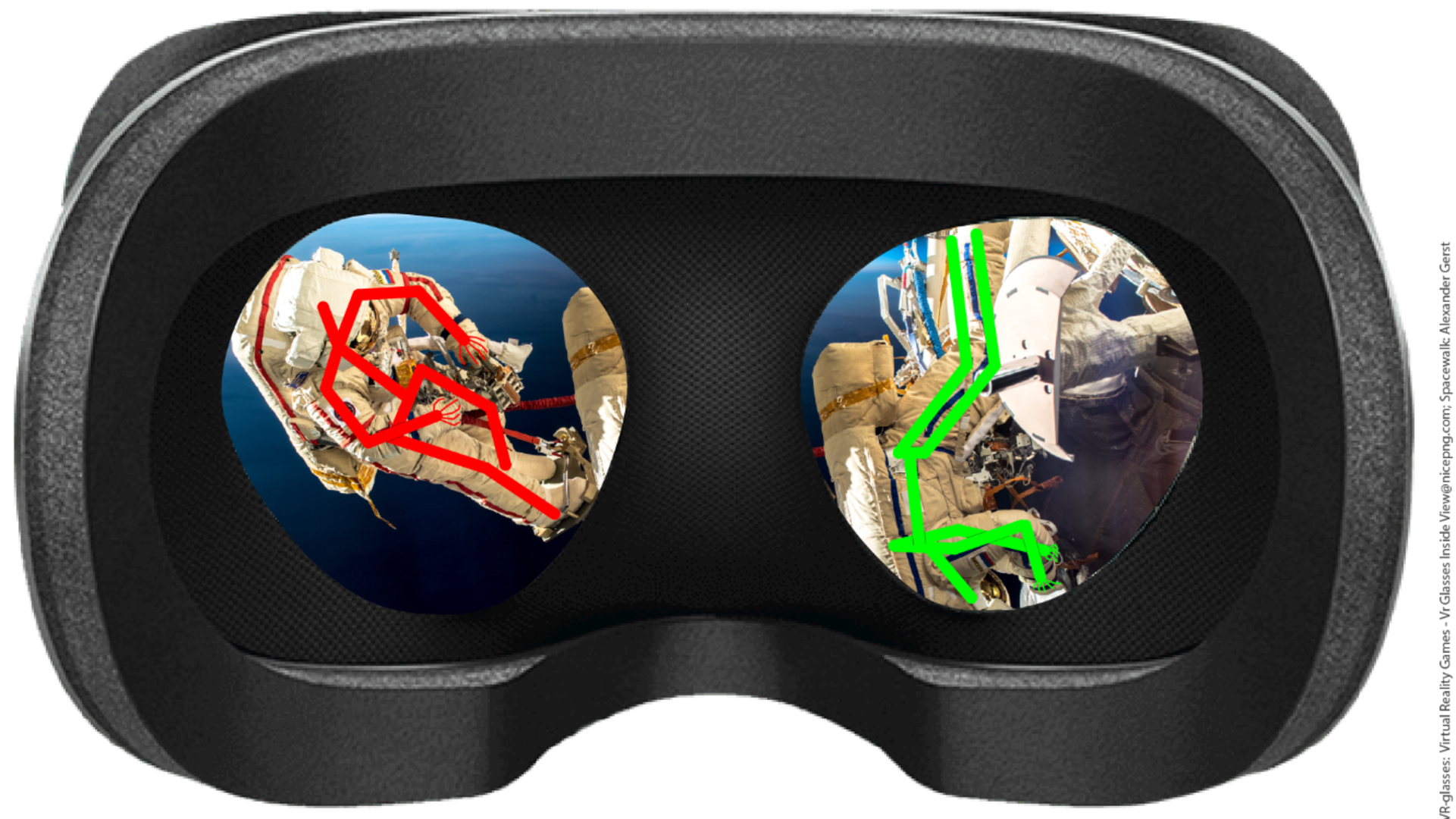The Discovery Campaign on extended realities (XR)
Below is the list of projects implemented through the Open Space Innovation Platform (OSIP) Campaign 'New ideas to make XR a reality'.
Extended reality lab for Mars experiments (Mars Xlab) (Sirin Orbital Systems)
This early technology development project aims to recreate the Martian surface through a virtual XR-based Mars laboratory. Artificial intelligence will be used to improve the resolution of images taken by Mars satellites and obtain surface features based on images taken by Mars rovers. The virtual lab will be validated using a physical Mars-like environment on Earth, and researchers will continue to improve it using real data from Mars satellites and rovers. The final product – ‘Mars Xlab’ – will enable virtual testing of future human and robotic exploration of Mars.
The Virtual Mission Control Room (VMCR) (Julius Maximilian University of Würzburg)
Read more about this public idea in OSIP
X-aRm (Space Applications Services)
Whilst in space, astronauts carry out extravehicular activity. This is often referred to as a 'spacewalk', but it involves risky and difficult work on the outside of the space station. This early technology development project aims to help astronauts train for extravehicular activity by developing an arm exoskeleton with force feedback. Astronauts can wear the exoskeleton arm – or X-aRm – whilst using virtual reality to better perceive the space environment and feel the forces involved in extravehicular activity.
Lightfield-enhanced immersive teleoperation system for space station and ground control (VTT Technical Research Centre of Finland)
Read more about this public idea in OSIP
Audiovisual Feedback to Augmented Manual Activities During Space Walks (Ilmenau University of Technology)
This study will explore the impact of the silence of space on the ability of astronauts to perform manual work on the outside of the International Space Station. It will investigate generating artificial sounds – for example the striking of metal or the humming of a motor – to give astronauts a confirmation during the activity. This may lead to a more natural and precise execution of the task. The sounds will be enriched with visualisations that provide a visual confirmation during the manufacturing, display additional information, and can lead the astronaut through the process step by step.
Underwater VR for astronaut training (Julius Maximilian University of Würzburg)
Astronauts train for extravehicular activity in swimming pools. Currently, very large and deep pools are needed for effective training. This study aims to reduce the need for such large pools by combining diving goggles with a virtual reality headset and to use the university's small pool (40 cubic metres) to simulate a space environment. Besides constructing water-tight VR headsets, the study will develop crucial tracking systems to determine position and orientation in space.
Digital Twins of Humans for Space Operations with XR telepresence (Ilmenau University of Technology)
A digital version of a human – an avatar – can be created by collecting data such as information on the position of body parts. This study aims to develop an immersive augmented/virtual reality viewer that uses 3D pose estimation to animate realistic avatars of people. This technology would support communications and monitoring – for example in areas like designing missions, assembly, integration, testing & verification of spacecraft, and in mission control.
Caressing infinity: haptic applications for intimate spaces in human extraterrestrial settlements
The space sector is on the threshold of establishing permanent settlements outside the Earth; this requires the creation of extraterrestrial spaces that not only serve to carry out scientific missions, but also to live a whole life. This co-funded research project aims to explore and define haptic (related to the sense of touch) applications and strategies through which augmented reality can improve the intimate spaces of human extraterrestrial settlements.















 Germany
Germany
 Austria
Austria
 Belgium
Belgium
 Denmark
Denmark
 Spain
Spain
 Estonia
Estonia
 Finland
Finland
 France
France
 Greece
Greece
 Hungary
Hungary
 Ireland
Ireland
 Italy
Italy
 Luxembourg
Luxembourg
 Norway
Norway
 The Netherlands
The Netherlands
 Poland
Poland
 Portugal
Portugal
 Czechia
Czechia
 Romania
Romania
 United Kingdom
United Kingdom
 Slovenia
Slovenia
 Sweden
Sweden
 Switzerland
Switzerland

























